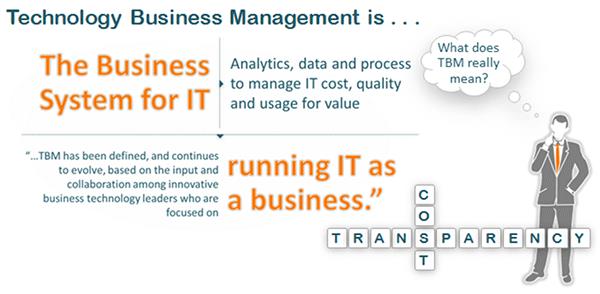How does an enterprise manage its sourcing arrangements to realize their full value? How do service providers gain a full understanding of contract expectations so they can bid accurately on RFPs? Enter Technology Business Management (TBM), a methodology that provides deeper cost insights for a more dynamic and automated sourcing process. When companies use TBM, they are able to make better business decisions, develop new financial business cases, and plan their future investments based on real data.
Gaining the full benefits of IT sourcing requires more than lean operations and competitive bidding. As sourcing has continued to evolve, enterprises have been faced with a dilemma: the value of a good sourcing contract can erode over time. From issuing an RFP to maintaining a contract, an organization needs clean data to calculate the Total Cost of Ownership (TCO) of its IT services, ensure flexibility in the contract and begin shifting front-loaded payment schedules to a subscription model. On the flip side, the service provider needs to maximize profits and secure a long-term commitment with revenue upfront.
It would seem enterprises and service providers are competing in a zero-sum game. A more effective model is one in which both parties share a common understanding of expectations to enable joint success.
Contract negotiations and service rollouts work best when buy-side enterprises and IT service providers communicate clearly the initial set of assumptions and craft the contract to fill specific needs. The base case financial model relies on data to develop a broader financial strategy and design a more effective sourcing arrangement. By aligning the data in the financial base case with the ATUM (Apptio TBM Unified Model) taxonomy, both parties gain new efficiencies. This approach can automate building a business case directly from the ATUM model, deliver dashboards to analyze the data, and apply tools to track and monitor the sourcing arrangement on an ongoing basis.
Over time, many arrangements suffer from a loosening of alignment. In a three-year contract, for example, the enterprise client may fail to revisit the initial underlying assumptions in the contract or evaluate its financial justification relative to the current market for the services.

Assumptions and the conditions that led to the RFP in the first place change over time, and what may have yielded benefit and cost savings in the beginning may eventually erode into something of lesser benefit. TBM-based software systems, such as Apptio, automate the monitoring and tracking needed to measure these assumptions over time. As contracts become shorter and more agile and, in the case of cloud-based services, less dependent on a front-loaded revenue model, cost transparency becomes a more essential component of outsourcing. Continually and automatically benchmarking, as part of a TBM-driven strategy, can improve transparency no matter the terms of the contract.
Effective service performance management, change management, benchmarking and data analysis supported by TBM will provide a better understanding of when and why a beneficial contract may become less cost effective over time.
Learn more about how TBM can inform sourcing decisions by contacting us.
